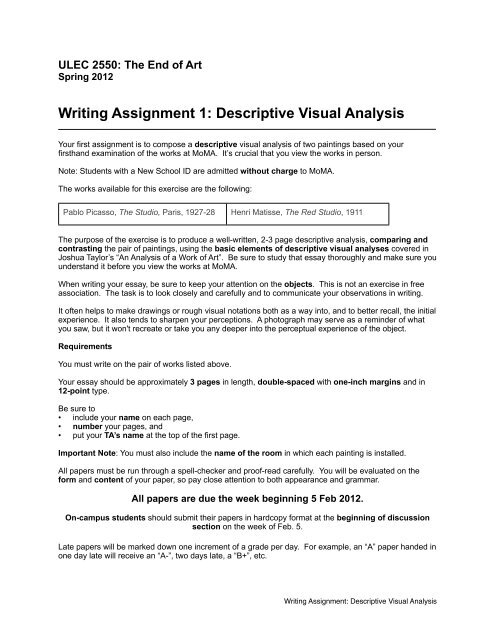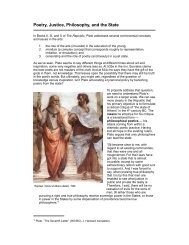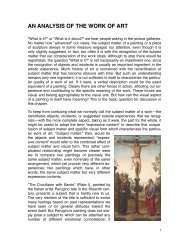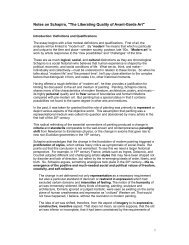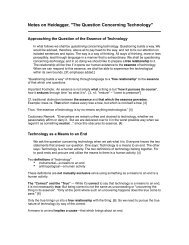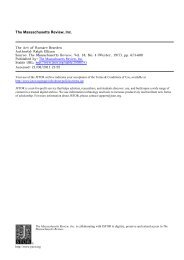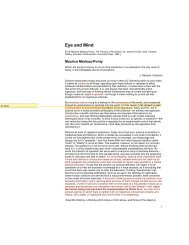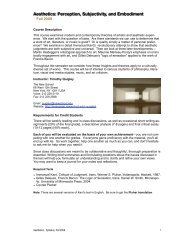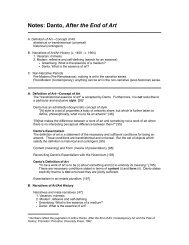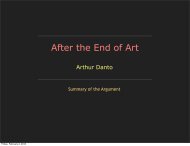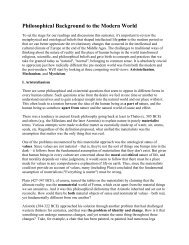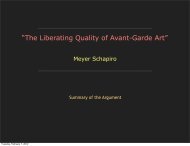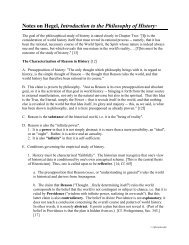Writing Assignment 1: Descriptive Visual Analysis - Timothy R. Quigley
Writing Assignment 1: Descriptive Visual Analysis - Timothy R. Quigley
Writing Assignment 1: Descriptive Visual Analysis - Timothy R. Quigley
You also want an ePaper? Increase the reach of your titles
YUMPU automatically turns print PDFs into web optimized ePapers that Google loves.
ULEC 2550: The End of ArtSpring 2012<strong>Writing</strong> <strong>Assignment</strong> 1: <strong>Descriptive</strong> <strong>Visual</strong> <strong>Analysis</strong>Your first assignment is to compose a descriptive visual analysis of two paintings based on yourfirsthand examination of the works at MoMA. It’s crucial that you view the works in person.Note: Students with a New School ID are admitted without charge to MoMA.The works available for this exercise are the following:Pablo Picasso, The Studio, Paris, 1927-28 Henri Matisse, The Red Studio, 1911The purpose of the exercise is to produce a well-written, 2-3 page descriptive analysis, comparing andcontrasting the pair of paintings, using the basic elements of descriptive visual analyses covered inJoshua Taylor’s “An <strong>Analysis</strong> of a Work of Art”. Be sure to study that essay thoroughly and make sure youunderstand it before you view the works at MoMA.When writing your essay, be sure to keep your attention on the objects. This is not an exercise in freeassociation. The task is to look closely and carefully and to communicate your observations in writing.It often helps to make drawings or rough visual notations both as a way into, and to better recall, the initialexperience. It also tends to sharpen your perceptions. A photograph may serve as a reminder of whatyou saw, but it won't recreate or take you any deeper into the perceptual experience of the object.RequirementsYou must write on the pair of works listed above.Your essay should be approximately 3 pages in length, double-spaced with one-inch margins and in12-point type.Be sure to• include your name on each page,• number your pages, and• put your TA’s name at the top of the first page.Important Note: You must also include the name of the room in which each painting is installed.All papers must be run through a spell-checker and proof-read carefully. You will be evaluated on theform and content of your paper, so pay close attention to both appearance and grammar.All papers are due the week beginning 5 Feb 2012.On-campus students should submit their papers in hardcopy format at the beginning of discussionsection on the week of Feb. 5.Late papers will be marked down one increment of a grade per day. For example, an “A” paper handed inone day late will receive an “A-”, two days late, a “B+”, etc.<strong>Writing</strong> <strong>Assignment</strong>: <strong>Descriptive</strong> <strong>Visual</strong> <strong>Analysis</strong>
Please submit only the text of your paper.Do not use cover sheets or plastic report covers.If you need additional instructions or guidelines, please contact your teaching assistant.Statement on Academic HonestyIt is expected that all work submitted for a grade in this course reflects the work of the student submittingit. Students are encouraged to discuss their work with others (inside and outside of class), and toexchange drafts of papers with one another for comments and criticisms. But keep in mind that if youborrow an idea from someone else, you must cite the source, even if it is based on a conversation orcorrespondence.Plagiarism or any other form of academic dishonesty will result in a failing grade for the course.Anyone who does not fully understand the standards of academic honesty should speak to their teachingassistant or to the instructor in advance of submitting coursework.<strong>Writing</strong> <strong>Assignment</strong>: <strong>Descriptive</strong> <strong>Visual</strong> <strong>Analysis</strong>


